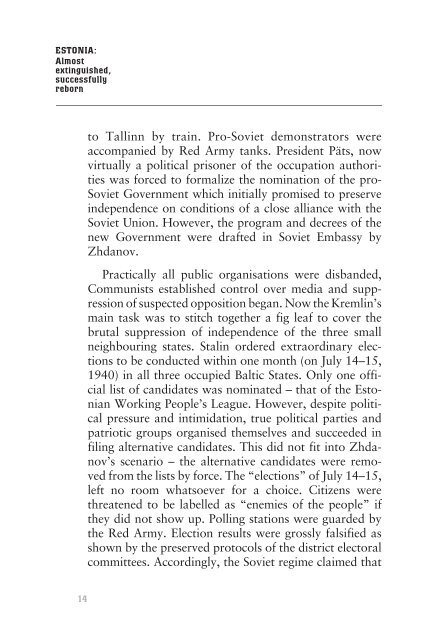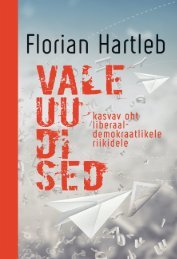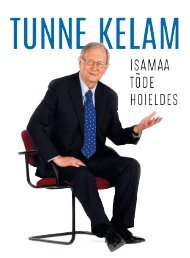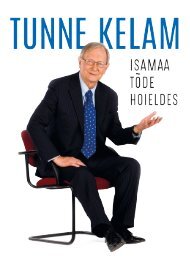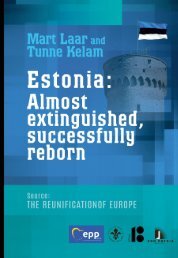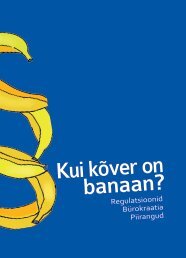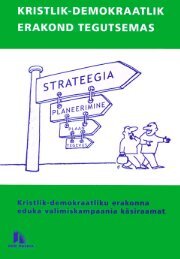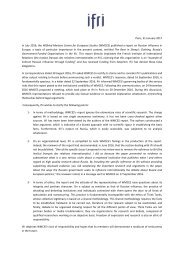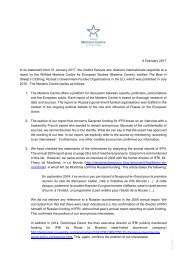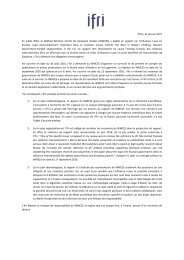Estonia: Almost extinguished, successfully reborn
The following text is the shortest possible review to help inform friends and guests from abroad about Estonia’s experience with foreign occupation and totalitarianism as well as its road to peacefully re-establishing national inde-pendence on the basis of democracy. Tunne Kelam Member of the European Parliament
The following text is the shortest possible review to help inform friends and guests from abroad about Estonia’s experience with foreign occupation and totalitarianism as well as its road to peacefully re-establishing national inde-pendence on the basis of democracy.
Tunne Kelam
Member of the European Parliament
You also want an ePaper? Increase the reach of your titles
YUMPU automatically turns print PDFs into web optimized ePapers that Google loves.
ESTONIA:<br />
<strong>Almost</strong><br />
<strong>extinguished</strong>,<br />
<strong>successfully</strong><br />
<strong>reborn</strong><br />
to Tallinn by train. Pro-Soviet demonstrators were<br />
accompanied by Red Army tanks. President Päts, now<br />
virtually a political prisoner of the occupation authorities<br />
was forced to formalize the nomination of the pro-<br />
Soviet Government which initially promised to preserve<br />
independence on conditions of a close alliance with the<br />
Soviet Union. However, the program and decrees of the<br />
new Government were drafted in Soviet Embassy by<br />
Zhdanov.<br />
Practically all public organisations were disbanded,<br />
Communists established control over media and suppression<br />
of suspected opposition began. Now the Kremlin’s<br />
main task was to stitch together a fig leaf to cover the<br />
brutal suppression of independence of the three small<br />
neighbouring states. Stalin ordered extraordinary elections<br />
to be conducted within one month (on July 14–15,<br />
1940) in all three occupied Baltic States. Only one official<br />
list of candidates was nominated – that of the <strong>Estonia</strong>n<br />
Working People’s League. However, despite political<br />
pressure and intimidation, true political parties and<br />
patriotic groups organised themselves and succeeded in<br />
filing alternative candidates. This did not fit into Zhdanov’s<br />
scenario – the alternative candidates were removed<br />
from the lists by force. The “elections” of July 14–15,<br />
left no room whatsoever for a choice. Citizens were<br />
threatened to be labelled as “enemies of the people” if<br />
they did not show up. Polling stations were guarded by<br />
the Red Army. Election results were grossly falsified as<br />
shown by the preserved protocols of the district electoral<br />
committees. Accordingly, the Soviet regime claimed that<br />
14


